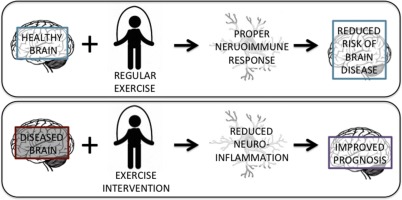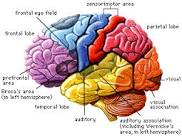What’s on your mind this week?
I feel very fortunate and grateful that a huge component of my day is I get to interact with a ton of people, especially because I do a lot of one on one training.
In the past week so many different topics have come up, but I wanted to share with you one I think you will find interesting.
First up: Exercise has preventative effects against cognitive decline.
“Physical inactivity is the most prevalent dementia risk factor in developed countries, associated with an 86 % risk of Alzheimer’s disease (AD) as well as other chronic conditions such as cardiovascular disease, obesity, and diabetes”.
You know sometimes how you can get so specialized in your specific field that something you know might not yet be common knowledge. This happened to me last week as I was training a client. The topic of support and accountability when trying to make a health change came up. This somehow led to people not doing what they know they should be doing to keep themselves healthy. And this led to our discussion on how exercise has a preventative effect against certain cognitive disorders. The person I was speaking with wasn’t convinced when I told her research has shown exercise has a preventative effect against cognitive diseases such as Alzheimer’s.
On a side note- The list of what conditions and disorders exercise prevents is LONG and POWERFUL. You can read some of them here:
http://www.cdc.gov/physicalactivity/basics/pa-health/
But back to cognitive decline… In the introduction to this study it states “Physical inactivity is an important risk factor for cognitive decline in ageing and for Alzheimer’s disease (Norton et al., 2014). Conversely, exercise can convey a protective effect (Ahlskog et al., 2011; Geda et al., 2012; Wirth et al., 2014; Ngandu et al., 2015; Prakash et al., 2015; Tolppanen et al., 2015) even if initiated after midlife (Tolppanen et al., 2015).(1). Apparently still poorly understand are the exact mechanisms happening within the body to provide these protective effects, but researchers know there are benefits to the cognitive function and memory of humans when exercising, and are currently exploring the ‘behind the scenes’ pathways. Researchers are able to correlate that those who exercise have improved and sustained cognitive abilities, and those who are diagnosed with a disease such as Alzheimer’s have a better prognosis if they exercise regularly, yet it is still a tricky subject to figure out what exactly is going on here as there are so many variables and ethic considerations to a study like this. For our purposes though, Simply put- the more exercise- the more blood/oxygen/nutrients sent to the brain- the healthier it will stay!
“Alzheimer’s disease (AD) is a progressive neurodegenerative disease that represents the eighth leading cause of death in people ≥65 years of age (Mayeux, 2003), affecting ∼20-30 million people worldwide (Selkoe and Schenk, 2003). Current therapeutics temporarily ameliorate the symptoms of AD, but few affect the underlying disease mechanism (Selkoe and Schenk, 2003). A number of epidemiological studies, however, suggest that simple lifestyle changes may be sufficient to slow the onset and progression of AD (Pope et al., 2003). A recent retrospective case control study (Friedland et al., 2001), for example, demonstrated that patients with AD were less active (both intellectually and physically) in midlife and that inactivity was associated with a 250% increased risk of developing AD”. (3)
Here is more evidence:
- In addition, exercise can reverse declining neurogenesis and memory function in aged rodents (van Praag, 2008; Marlatt et al., 2010; Vivar et al., 2013; Opendak and Gould, 2015), (Figs 1C and 2). (1)
2. Exercise can improve insulin sensitivity (Lucas et al., 2015) and could thereby potentially contribute indirectly to improving memory function. (1)
3. A combination of exercise and cognitive enrichment in mice increases protective effects against synaptotoxicity of amyloid-β protein in the hippocampus (Li et al., 2013). (1)
4. Barnes and Yaffee (2011) reviewed 16 cohort studies and found a 28% decreased risk for all-cause dementia and 45 % reduction in AD dementia in those with higher activity levels compared with low. (2)
5. Highlights from this study (as listed on the top of their front page):

Photo credit from research journal listed in footnotes (5).
- • A physically active lifestyle reduces the risk of developing brain diseases.
- •
-
Exercise and physical activity have whole body anti-inflammatory effects.
- •
-
Exercise may be neuroprotective due to a reduction in neuroinflammation.
- •
-
Exercise intervention can reduce neuroinflammation in brain disease and improve prognosis.
6. If you need more convincing just read some of these articles on Google Scholar (or if you are into reading the science behind what is going on for exercise to protect against these diseases): https://scholar.google.ca/scholar?as_ylo=2016&q=does+exercise+decrease+the+risk+of+Alzheimer%27s&hl=en&as_sdt=0,5.
7. On a side note if you are looking to read some research on what supplements are being studied to prevent cognitive decline you can find those here: http://examine.com/topics/Cognitive+Decline/
What I find very interesting is this chart listing how much exercise we need to do to get improved cognitive function:
” Preliminary data in humans and evidence from animal studies suggest that improving brain function would require 3–6 months of moderate to high intensity training. In contrast, preservation of function can be best demonstrated with prolonged regimes where mild-to-moderate levels are more practical. A combination of both approaches seems feasible but has not yet been tested.
Exercise regime Duration Preserving function Mild-to-moderate intensity, 50–70% of max. cardiac output, ≥3 × weeks, 30–40-min sessions (Erickson et al., 2011) ≥12 months Improving function Moderate-to-high >75% of max. cardiac output, ≥3 × weeks, 30–40-min sessions with high intensity intervals of 4 × 5 min (Maass et al., 2015c) 3 to 6 months Combined approach Long-term mild-to-moderate intensity training with brief intervals (for instance 1 week every 4 weeks) of moderate-to-high intensity ≥12 months SUMMARY of Chart: we need to exercise moderately and regularly, as well as include some high intensity training to get a preserving function to our mental capacity, as well as improve it. Most of this training should be in aerobic form (meaning it keeps your heart rate between 50-75 % of your hear rate max for the whole length of time ~ 30-60 minutes). Remember, aerobic training doesn’t mean you have to jump on the treadmill, if you lift weights intensely and steadily for an hour with little breaks, play a game of squash, hike, ski, or dance you are working your heart in the same way.
In conclusion, although there are obviously many variables that would affect a study of this magnitude (genetics, flaws in the studies, self reported data etc.) it is evident that exercise is playing a role in preventing cognitive decline. Whether or not researchers can pinpoint and demonstrate exactly what is going on in our brain, at least for now they can get our butts off the couch to get some exercise.
In today’s society with the majority of our population aging- how important do you see it being to get people up and moving in a fun way on a daily basis! Keep your parents and grandparents active as best as you can.
GET OFF THE COUCH AND MOVE REGULARLY no matter what age you are!! 🙂 Keep as much function as you can, and prevent these diseases!
(1) https://brain.oxfordjournals.org/content/139/3/662.full
(2) https://books.google.ca/books?hl=en&lr=&id=BVRyCwAAQBAJ&oi=fnd&pg=PA147&dq=does+exercise+decrease+the+risk+of+Alzheimer%27s&ots=9p6w3ItSj5&sig=OV4gopUQ6YZHiH7kMtJzrUaqLZM#v=onepage&q=does%20exercise%20decrease%20the%20risk%20of%20Alzheimer’s&f=false
(3) http://www.jneurosci.org/content/25/17/4217.full
(4) http://www.sciencedirect.com/science/article/pii/S0361923016300557

